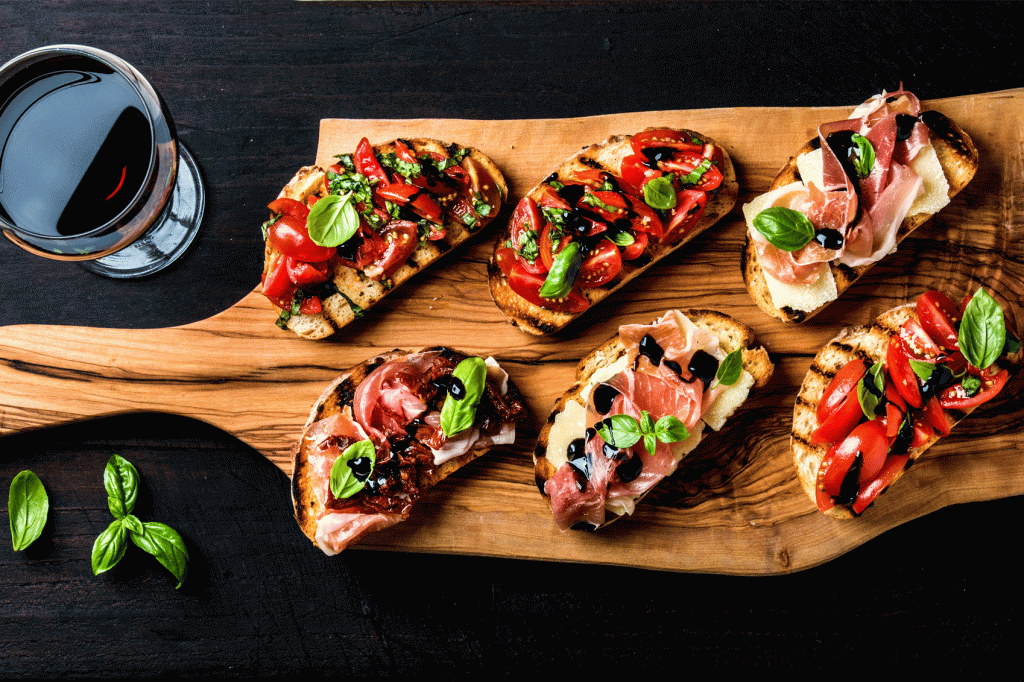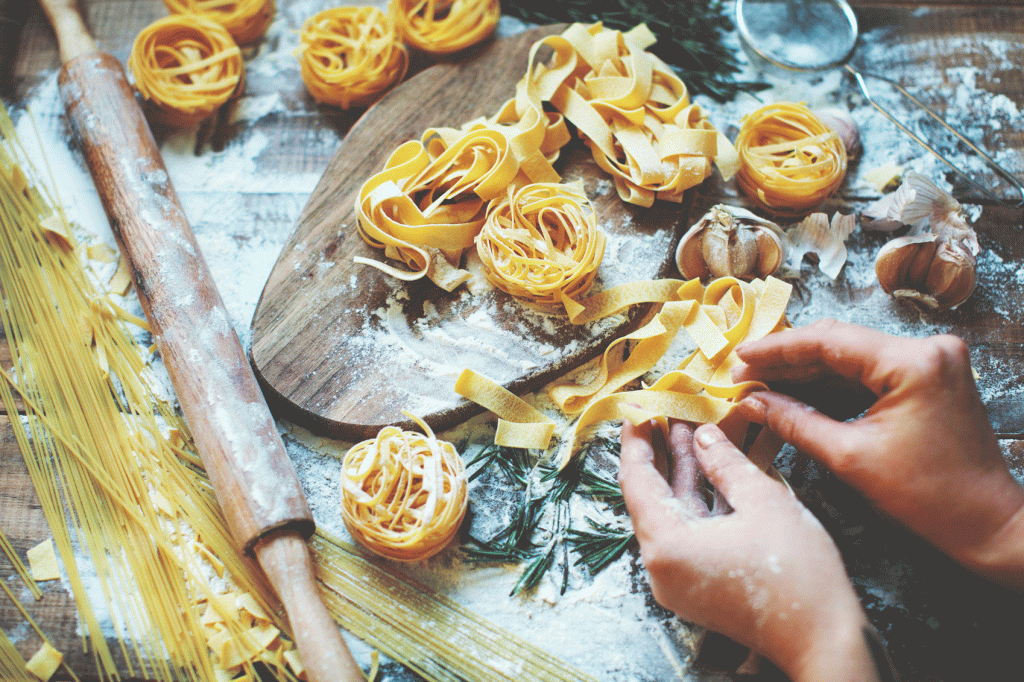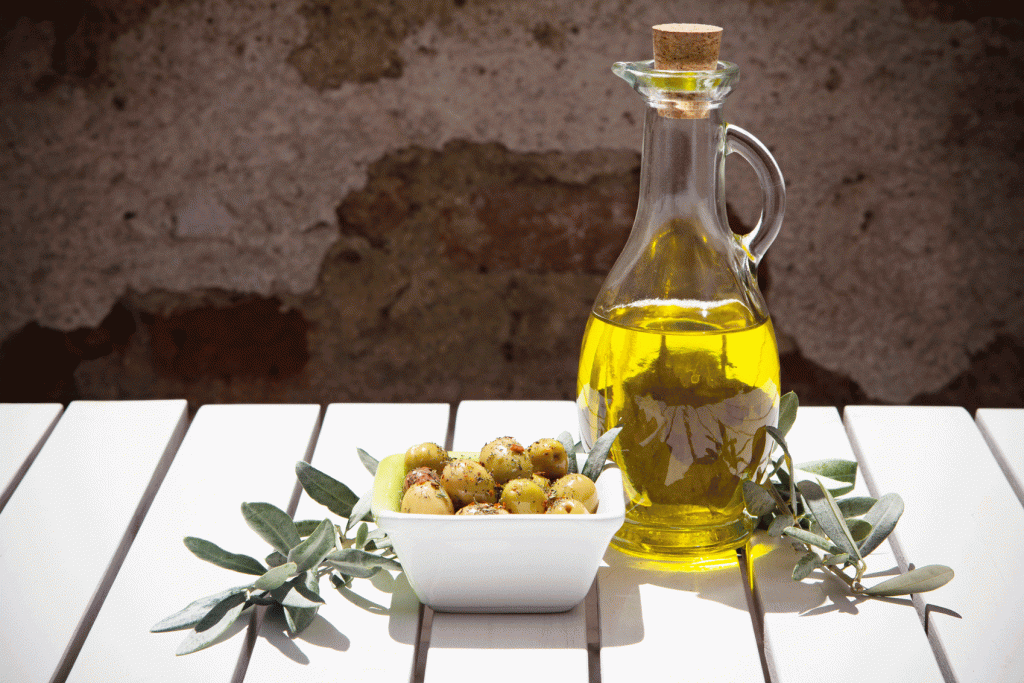Recently updated on January 30th, 2020 at 01:10 am
While Italian cuisine differs by region, some techniques remain the same whether you’re down south in Puglia or up north in Venice. Thanks to nonna in the kitchen passing down her culinary pearls of wisdom generation after generation, there are certain golden rules of Italian cooking. Cultivate your knowledge of Italian cuisine and learn how to cook like an Italian with these top 10 tips.
1. Less is more
You won’t find Italian dishes overloaded with spices, seasonings and myriad surplus elements. Keeping it simple allows the fresh and seasonal ingredients do the talking. Who knew linguine, butter and garlic alone could taste so good?
2. Quality is key
Scaling back on ingredients means there’s nowhere to hide when it comes to quality. For meat and vegetables, shop organically and locally to ensure freshness and flavour. Avoid supermarkets for sliced meats, breads and condiments, and instead source your imported bresaola and balsamic from an authentic Italian delicatessen.

3. Get to know your ingredients
To learn your prosciutto from your Parma ham, pay a visit to your local Italian Deli and befriend the staff. Not only can you tap up their expert knowledge, but you can also get insider information on when deliveries arrive, what you should be buying each season and where their produce was sourced from.
4. Stock up on staples
No Italian larder is without a well-stocked supply of staples. Think: high quality olive oil, parmesan cheese, risotto rice and spaghetti or tagliatelle. And don’t worry, there’s no snobbery surrounding dried pasta. In fact, dried works better than fresh with robust ragus and sauces.

5. Al dente is your friend
Speaking of which, there’s nothing worse than a plate of soggy spaghetti. Almost all Italians serve their pasta al dente (‘to the tooth’), meaning firm and just slightly undercooked so that it still has bite. To ensure yours retains some density, begin tasting a few minutes before your pasta instructions say it should be ready.
6. Own your oils
Olive oil comes in a bewildering array of different options, so it can be tricky deciding which one to use when preparing a meal. A basic, mild oil is fine for cooking, so use it liberally when frying. When you’re zinging up dishes like salads or fish, opt for an 100% extra virgin olive oil. Made from the first pressing, extra virgin oil will be stronger and more peppery. Be sure to store it away from direct light, as olive oil loses flavour and nutritional value quickly.

7. Cook from the heart
Italian food is blissfully unpretentious with little bother for Michelin stars or fussy presentation. As meals are almost always communally prepared for families and loved ones, food comes from the heart with a focus on intuition and nourishing the soul as much as the taste buds. Once you’ve gained some cooking confidence, don’t be afraid to inject your own flair and personality into your cooking.
8. Serve slowly
Italians don’t like to rush dining. In fact, a leisurely lunch could roll on well into dinner time. Communal dining with good company and conversation is the order of the day, so take your time, savour, and serve your courses slowly with a side order of first class Brunello di Montalcino wine from Tuscany. An average Italian meal contains five courses; antipasti (appetisers), primi piatti (first course), secondi piatti (second course), contorini (side dishes) and finally – if you have room! – dolci (dessert)

9. Don’t waste a thing
Many Italian classics were borne out of frugality, so don’t discard things that can be used again. For instance: saving chicken carcasses for risotto stock and frying up some hardened ciabatta in cubes with garlic to make tasty crutons for Pappa al Pomodoro, a traditional Italian bread and tomato soup.
10. Balance the basics
Most Italian cooking is based around a Holy Trinity of three components: a flavour source (most likely coming from a sauce), a carrier (pasta or vegetables) plus a meat or fish element. Following recipes and experimentation will quickly teach you what works with what. Having a selection of fail-safe recipes like basil pesto or tomato ragu in your repertoire will mean you’re onto a winner each time.
If you’d like to sample some authentic risotto alla Milanese or Tuscan fettunta, our expertly guided Italian tours will take you to the home of mouth-watering cuisine.
Image Credits: Main Image: iStock/GMVovd. Table scene: iStock/Franckreporter. Olive oil: iStock/101dalmatians. Pasta making: iStock/Xsandra. Bruschetta board: iStock/Foxys_forest_manufacture.